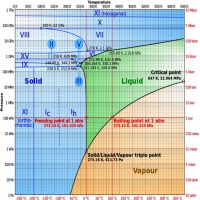The Frozen Void

Tuesday 15th April, 2014
 |
Our speaker, Aleksi Suutarinen from the Open University came to talk to us about "The Frozen Void" and began with some poetic phrases from Hamlet, namely "This most excellent canopy, the air... fretted with golden fire..." Although Hamlet fails to appreciate the beauty of the skies due to the dark mood he is in, Alexis can. He told us that without all the interstellar matter that fascinates him there would be no Hubble Space Telescope "pretty pictures" that appear in media all across the globe.
Aleksi studies the material between stars in the cold depths of space and most of this material is in the form of ice but not just water ice that we are more familiar with here on Earth. Amongst other compounds, he studies ice in the form of methane clathrates, dry ice and strange forms of water ice.
One puzzle that he would like to help solve is how a tiny dust grain can grow into a metre-sized dust grain, which then in turn can build into planets such as those that revolve around our own Sun. Scientists already understand how metre-sized rocks grow under the influence of gravity into larger objects that are known as protoplanets and eventually planets. However, as gravity is a relatively weak force on material that is the size of a dust particle they do not know how these small grains reach the dimensions of a rocky-ice body about a metre across.
Aleksi has used data from the Japanese Space Agency's Akari spacecraft which was put into a low Earth orbit in 2006. This used a Richey-Chrétien reflecting telescope with a 0.685-metre diameter mirror to gather infrared light emitted from relatively cold interstellar clouds. To observe the cold dust and ice it needed to be cooled using liquid Helium and a system of mechanical coolers down to 6 Kelvin (a very chilly -267 Celsius). Its mission ended in November 2011 after an earlier major electrical failure that year rendered its science instruments inoperable.
To analyse the type of dust or ice and how much of it there was Akari had on board two infrared spectrometers. One spectrometer gathered slightly longer wavelengths of infrared light than the other. The spectrometers split the light further into finer wavelength bands just as a prism produces a spectrum splitting sunlight into its various colours.
In fact, Aleksi showed us a picture of a rudimentary spectrometer that he had made out of household materials. The simple spectrometer's main components are a cereal box, a CD or DVD plus some tape and instructions are widely available on the internet.
To round off his talk he told us a number of interesting facts. For example, in a molecular cloud in the constellation of Aquila (the Eagle) there is enough ethanol to fill more than 300 trillion trillion pint beer glasses. The problem is that the cloud (designated G34.3) is about 10,000 light years away and it exists as a gas rather than in liquid form!
This article was written for the club news column of the Stratford Herald. The actual lecture explained the subject at a deeper level.
